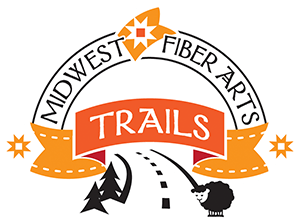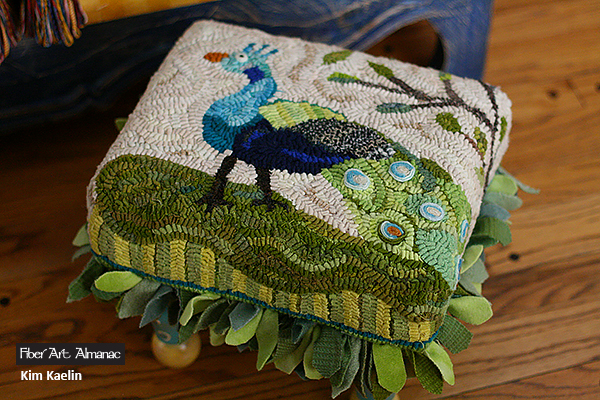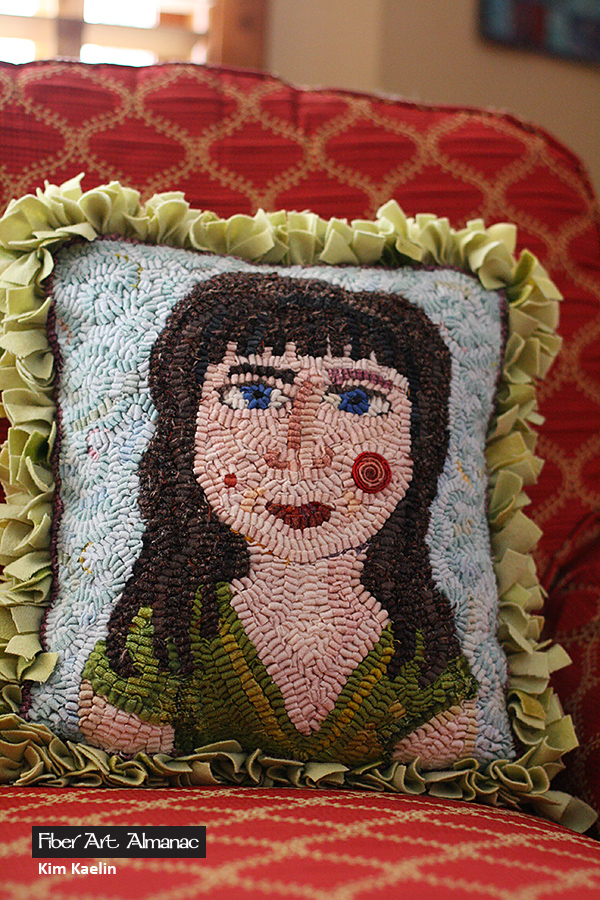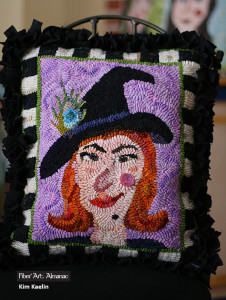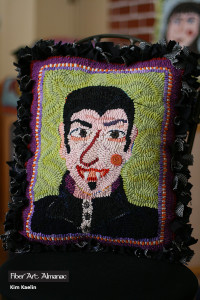A long way from her Southern roots now, Kim Kaelin first learned about rug hooking from a DIY cable television show in 1993. Commenting about that era being pre-Google, she combed the Louisville phone book in search of rug hooking information, classes or a shop. Not to be found until almost ten years later after she and her family had moved to snowy Minnesota. A local shop advertised a beginning rug hooking class and she had found her bliss.
One of Kim’s mantras is “to get the rug up off the floor!” She feels there are so many beautiful rugs made, but because the hookers (as they are affectionately known) don’t want their work efforts to be walked on, they put the rugs safely away. Kim’s proposition is to take the hooked pieces and turn them into a functional work of art. This very idea along with Kim’s love of folk art decor, has given way to a very successful rug hooking class called the Footstool Workshop where the students make folk art footstools, benches and other small pieces of furniture. Kim now teaches this class in Hudson, Wisconsin, Milwaukee and in Detroit, Michigan.
Kim says she loves rug hooking for several reasons; the touch of the wool, the rhythm of the hooking and the color. Getting into the tempo; the movement of the hooking process itself and the feel of the material put Kim into a type of flow where hours fly by without notice.
Wool is the medium Kim uses most often to make the tops for her whimsically decorative art form. I think the contemporary use of the word maker is interesting in our world of combining elements of DIY, Craft and Fine Art. In an article written by UK Professor Dr. Stephanie Bunn, who writes about our culture of materials and makers, the word maker should be spelled with a capital M. She talks about the ‘working with’ rather than the ‘doing to’ and says the relationship the maker has with her materials is a fundamental part of making experience. It’s not just the technique but the feel of the materials in the artists’ hands. It is this art of making with this particular material that is important for Kim.
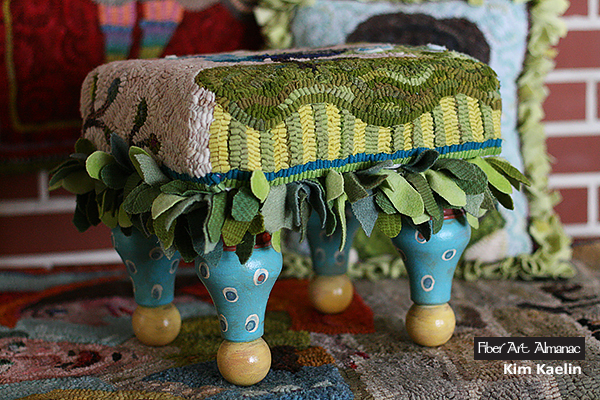
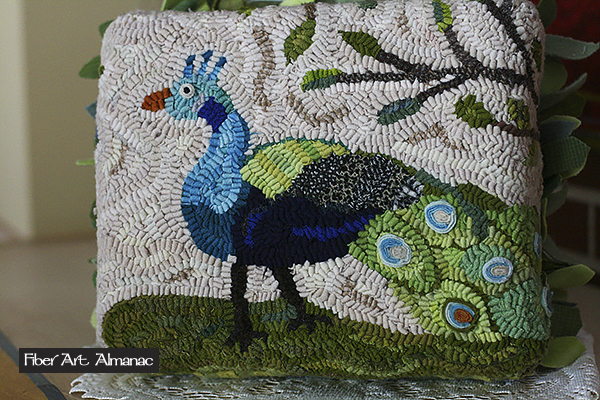

The actual hands on process of creating a folk art footstool or a commission piece has many steps with each step having its own charms and challenges. Kim enjoys combing flea markets and occasional sales for interesting benches and frames for small decorative pieces. Often she will build her own pieces out of turned legs and plywood and paint the wood in bright colors using a quirky and unexpected style. When all the elements come together she’s amazed at how the piece comes alive! She jokingly equates it to the clock and teapot in the Beauty and the Beast fairy tale!
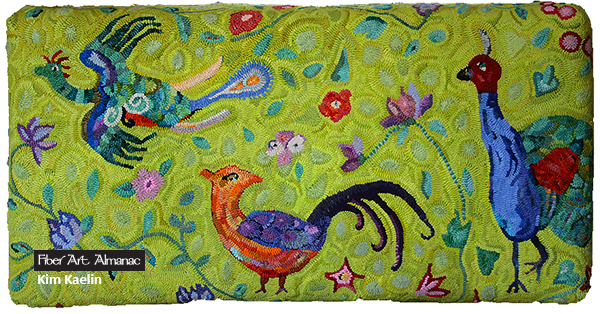
Kim is also known for her portrait work. This particular face is a representation of a friend’s daughter. Kim worked from a high school photo. In line with her folk art style, Kim adds a wool whorl and proddy trim. The trim adds dimension and accentuates their folk style even more! It magnifies the pillow’s charm factor—as if it wouldn’t be fabulous enough! The pillow backs are made from wool piecework. Kim says she has done quite a few commissioned portraits this year. Kim’s Dracula and Witch pillow portraits show off how much fun she has with Halloween décor.
In addition to her teaching and hooking, Kim organizes an annual show at Lakeview Hospital in Stillwater, MN. In its 5th year, the twenty or so rugs will be on exhibit during August and September, 2014. The theme of the show is “Birds of a feather flock together.”
Contact Kim at Fancy Legs Folk Art for workshops and classes. She also teaches at Magnolia’s on Locust in Hudson, Wisconsin. Magnolia’s On Locust
Kim’s Halloween pillows!
P.s. Correction: The hooked sheep rug that appeared in the newsletter is called Curly and was designed by Melissa Elliot and hooked by Kim Kaelin.
